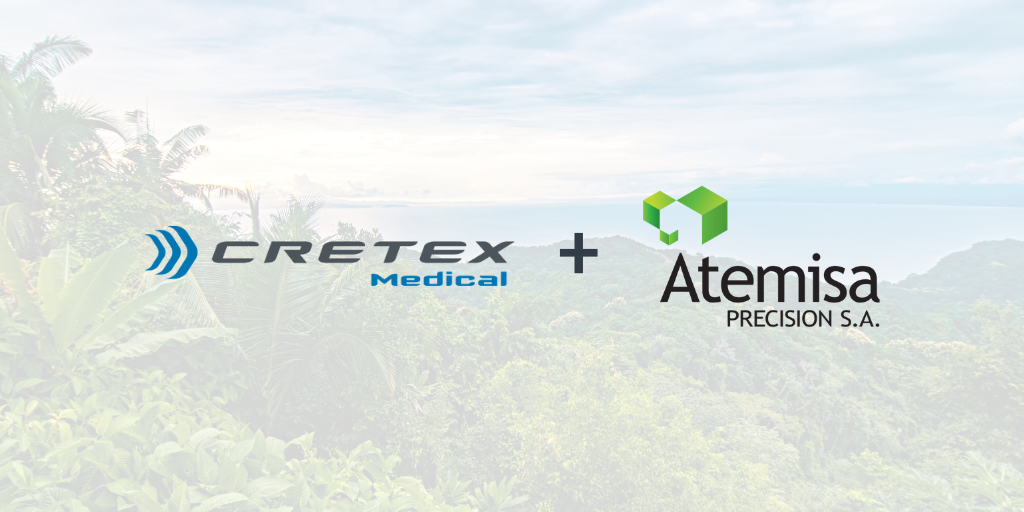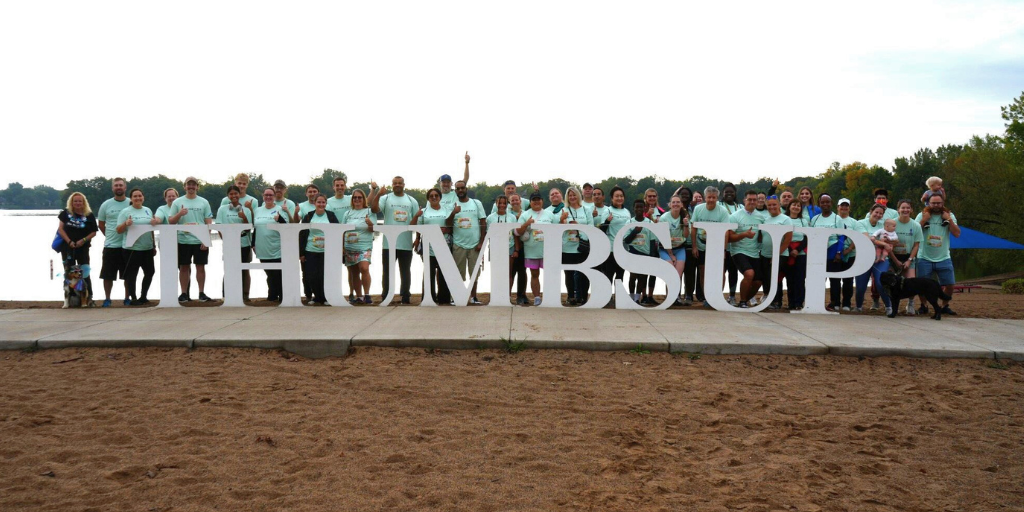Additive Manufacturing: Moving Beyond Implants - An Orthopedic Innovators Q&A
With additive manufacturing becoming more of a production process, it’s critical to find the right suppliers who have expertise with it.
by Sean Fenske, Editor-in-Chief | October 15, 2024
Cretex Medical | rms's Director of Operations - Additive Manufacturing, Troy Olson, was featured in ODT Magazine.
Additive manufacturing (AM) is still often used for prototyping and design tasks, where precision and exact tolerances are not critical. These types of activities can be accomplished by many with an introductory knowledge of the technology. As the process is used for more sophisticated devices, such as orthopedic implants, expertise is a much more critical necessity to ensure success.
As more orthopedic device manufacturers exhibit interest in AM for even more products, the challenges increase further. Aspects such as scalability come into play, as well as the need to affordably produce an array of technologies with these machines. As a result, companies are seeking experienced suppliers who maintain expertise with AM for orthopedic implants, instruments, and other devices.
Fortunately, Troy Olson, Director of Additive Operations at Cretex Medical | rms, has offered insights on a variety of inquiries surrounding this topic in the following Q&A. He provides clarification on what medical device firms need to keep in mind when working with a supplier on additively manufactured products, the benefits of working with an experienced partner, and some often overlooked factors.
Sean Fenske: When you say additive manufacturing, most people think of 3D printing with plastic. What AM techniques and technologies are used for the orthopedic device sector?
Troy Olson: In the medical technology space, additive manufacturing (AM) for orthopedics typically refers to the printing of implantable metals. We use powder bed fusion technology to make device components from Grade 23, TI6AI4V titanium. We’ve gained significant expertise with this material and technology, as we’ve been using them for implantable devices for many years.
Fenske: AM has rapidly evolved from a design tool to a finished implant fabrication option. For what other types of orthopedic technologies is it being used today?
 Olson: Originally, AM was used primarily in the spine space for fusion cages and intrabody spacers. The porous and lattice structures that can only be created with AM is ideal for products that need to promote osseointegration or bony ingrowth.
Olson: Originally, AM was used primarily in the spine space for fusion cages and intrabody spacers. The porous and lattice structures that can only be created with AM is ideal for products that need to promote osseointegration or bony ingrowth.
The AM industry’s growing expertise, combined with the positive results we see with AM products, is driving increased demand for more sophisticated orthopedic devices. We’re now expanding into multiple parts of the anatomy, including shoulder reconstruction, foot and ankle, and custom implants. AM can also be very impactful when creating specialized instrumentation and drill guides.
Fenske: The expansion of AM into additional areas and markets you’ve mentioned naturally requires higher volume production. How is AM successfully scaled up to accommodate those needs?
Olson: It all starts with thoroughly understanding your customers’ needs and then determining what it will take to meet those needs. When we initially entered the AM field, it was because it complemented our existing manufacturing capabilities of subtractive machining, cleaning, laser marking, and post-processing work in which we already excelled. From the beginning, it was clear producing AM products that met the volume and sophistication needs of our customers would require more than just adding AM printers.
 To reach the necessary production scale, we developed our own AM business unit with dedicated resources—engineers focused solely on scaling and developing additive manufacturing. They were able to review the entire AM process flow to determine and implement best practices in line with customer needs.
To reach the necessary production scale, we developed our own AM business unit with dedicated resources—engineers focused solely on scaling and developing additive manufacturing. They were able to review the entire AM process flow to determine and implement best practices in line with customer needs.
Fenske: When working with a supply chain partner providing AM, how should a company best plan for the increased production needs? Do they need to communicate specific needs to the AM supplier?
Olson: Building strategic partnerships with all your outside suppliers is key to success. Even in a company like Cretex Medical where we’re able to vertically integrate so many steps in the production process, we still need to be very thoughtful about each supplier. Given our production process, we need to build relationships with our material suppliers and heat-treating vendors. If a problem arises with one supplier, being dual-sourced with all outside suppliers means the production disruption will be minimized as much as possible. It’s important to build those redundancies into your supply chain.
Fenske: What aspects of AM are often overlooked or not considered appropriately when scaling up to work with larger quantities? What factors must be kept in mind?
Olson: The biggest factor often overlooked with additive manufacturing is production scheduling. Allocating time and resources appropriately is a complex task.
Consider each AM machine has a set volume of titanium powder that is reduced with each build. You need to understand what the part height is going to be with each machine, and how much titanium powder will be required. When you’re structuring a build over several weeks, you need to keep in mind what the powder level and powder life will be at each time interval. As powder is used, there is some powder degradation that must be accounted for. That allows you to calculate when you need to take each machine offline so the powder can be sieved or changed out. Knowing this allows you to better plan staggering which printers are in use and which are offline throughout the build cycle.
The capacity plan and schedule you create needs to account for all of this across dozens of production printers running 24 hours a day, seven days a week. That plan also needs to account for the preventative maintenance required after every 2,500 hours of laser usage, and ensure there is adequate and well-trained staffing available to monitor and maintain the stable of printers in a deliberate and manageable fashion. The complexity involved in orchestrating all these moving parts is greater than the capabilities of most ERP systems. It’s an aspect of production we’ve learned how to manage through years of experience in operation. Our expertise formed over time from performing these tasks.
Fenske: What kinds of challenges can make an AM project go awry, and how do you handle those?
Olson: Finding and training the talent required to operate these machines can be challenging. This is more difficult than finding a typically skilled machinist. There aren’t very many printing technicians who can just come in and do the work of changing over these machines. We’ve found it requires about six months of on-the-job training before new hires are fully brought up to speed. It’s not just the technical skill and understanding that must be learned, but also the nuances of handling reactive materials like titanium in an environment where you need to wear personal protective equipment, including a respirator. There aren’t technical schools training candidates for that type of experience or process.
Specially trained technicians maintain titanium AM, The buildout of a facility that can handle this scale of AM production is also an expensive and complex task. At our Coon Rapids facility, we needed to work closely with our local fire marshal to develop a unique fire suppression system for our AM facilities. A standard sprinkler system wouldn’t have been compatible with an H3 reactive material manufacturing area.
When we performed our risk assessments of the operation, we identified the potential of an external power outage as potentially very costly. A power interruption during a standard three-day build could cause 90 days of production delays. That’s why we invested $1.5 million in a backup generator and battery system that would allow us to operate our additive manufacturing unit without interruption indefinitely.
Our customers can trust we have the know-how and have completed the planning to ensure we can keep our promises and deliver products on time and on spec.
Fenske: Do you have any additional comments you’d like to share based on any of the topics we discussed or something you’d like to tell orthopedic device manufacturers?
Olson: Many of the components we produce require post-processing and machining. One of the keys to our success is our vertical integration. We can do the parts removal, build plate reconditioning, machining, blasting, production control, cleaning, and packaging in-house. Many of our competitors need to outsource those functions, which adds time and cost to their processes.
Our unique business model also allows us to make investments in technologies like CT scanning, which enables us to perform non-destructive quality tests, greatly improving the efficiency of our processes.
Producing additively manufactured components at scale isn’t something anyone can do overnight. At Cretex Medical | rms, we built our AM capabilities from scratch. Our first few years were full of challenges and steep learning curves. It represented a test of our resiliency, our ability to acquire expertise, and our drive to succeed. But without those growing pains, we wouldn’t have learned how to master the challenges of AM manufacturing.
We’re proud to have reached a point where we have 70 employees working 24/7 to produce over 300,000 AM medical instruments and implants per year.
This article originally appeared in ODT Magazine.



